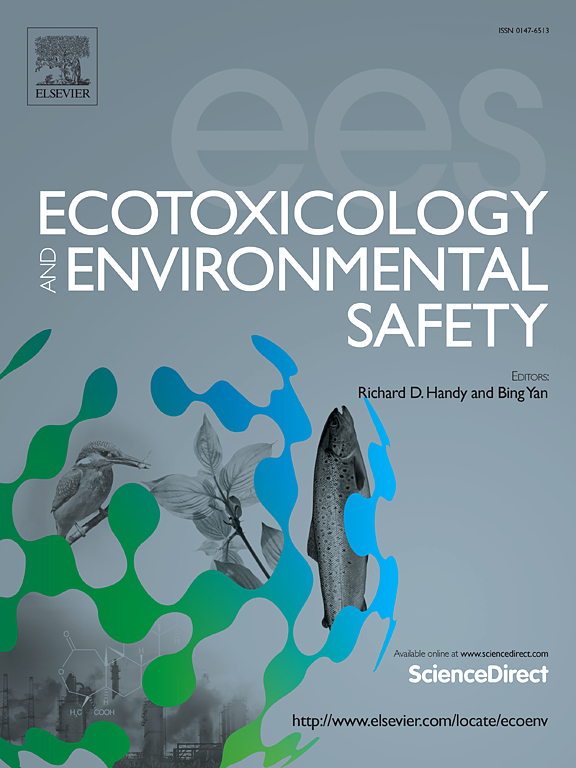Visual indicator for the detection of methylmercury in blood: A critical biomarker for dietary exposure assessment
IF 6.1
2区 环境科学与生态学
Q1 ENVIRONMENTAL SCIENCES
引用次数: 0
Abstract
Methylmercury (MeHg), a significant dietary exposure biomarker, poses a substantial threat to public health, primarily due to the consumption of aquatic foods. Current detection methods are complex and unsuitable for on-site testing, necessitating the development of a simple and sensitive biosensor for rapid screening. This study addresses this challenge by developing a highly sensitive whole-cell biosensor for detecting organic mercury in blood samples, offering both visual qualitative and colorimetric quantitative assessments. We engineered a biosensor based on the mer operon and deoxyviolacein (DV) pigment, optimizing its performance by adjusting the MerB expression level, screening host cells, and incorporating the biosurfactant rhamnolipid. The optimized biosensor achieved a detection limit of 0.195 nM and exhibited a linear response range of 0.195–1.563 nM for MeHg. This range is significantly below the Provisional Tolerable Weekly Intake (PTWI) of 1.6 μg/kg body weight per week established by the Joint FAO/WHO Expert Committee on Food Additives (JECFA), ensuring the reliable detection of MeHg at concentrations well within the safety threshold. Notably, the biosensor demonstrated broad-spectrum detection capabilities, including natural MeHg and synthetic organomercurials, which are crucial for assessing dietary exposure risks from various sources. This study advances the development of a novel biosensor for MeHg detection, highlighting its potential as a critical tool for assessing dietary exposure risks and contributing to understanding food safety and public health.
检测血液中甲基汞的目视指标:饮食暴露评估的关键生物标志物
甲基汞(MeHg)是一种重要的饮食暴露生物标志物,主要由于食用水生食品而对公众健康构成重大威胁。目前的检测方法复杂,不适合现场检测,需要开发一种简单灵敏的生物传感器进行快速筛选。本研究通过开发一种高灵敏度的全细胞生物传感器来检测血液样本中的有机汞,提供视觉定性和比色定量评估,从而解决了这一挑战。我们设计了一种基于mer操纵子和脱氧紫罗兰素(DV)色素的生物传感器,通过调节MerB表达水平、筛选宿主细胞和加入生物表面活性剂鼠李糖脂来优化其性能。优化后的传感器对MeHg的检测限为0.195 nM,线性响应范围为0.195 ~ 1.563 nM。这一范围大大低于粮农组织/世卫组织食品添加剂联合专家委员会(JECFA)确定的每周1.6 μg/kg体重的临时可耐受摄入量(PTWI),确保在浓度完全在安全阈值范围内可靠地检测甲基汞。值得注意的是,该生物传感器展示了广谱检测能力,包括天然甲基汞和合成有机汞,这对于评估各种来源的饮食暴露风险至关重要。本研究推进了一种新型甲基汞检测生物传感器的开发,强调了其作为评估饮食暴露风险和有助于了解食品安全和公共卫生的关键工具的潜力。
本文章由计算机程序翻译,如有差异,请以英文原文为准。
求助全文
约1分钟内获得全文
求助全文
来源期刊
CiteScore
12.10
自引率
5.90%
发文量
1234
审稿时长
88 days
期刊介绍:
Ecotoxicology and Environmental Safety is a multi-disciplinary journal that focuses on understanding the exposure and effects of environmental contamination on organisms including human health. The scope of the journal covers three main themes. The topics within these themes, indicated below, include (but are not limited to) the following: Ecotoxicology、Environmental Chemistry、Environmental Safety etc.

 求助内容:
求助内容: 应助结果提醒方式:
应助结果提醒方式:


